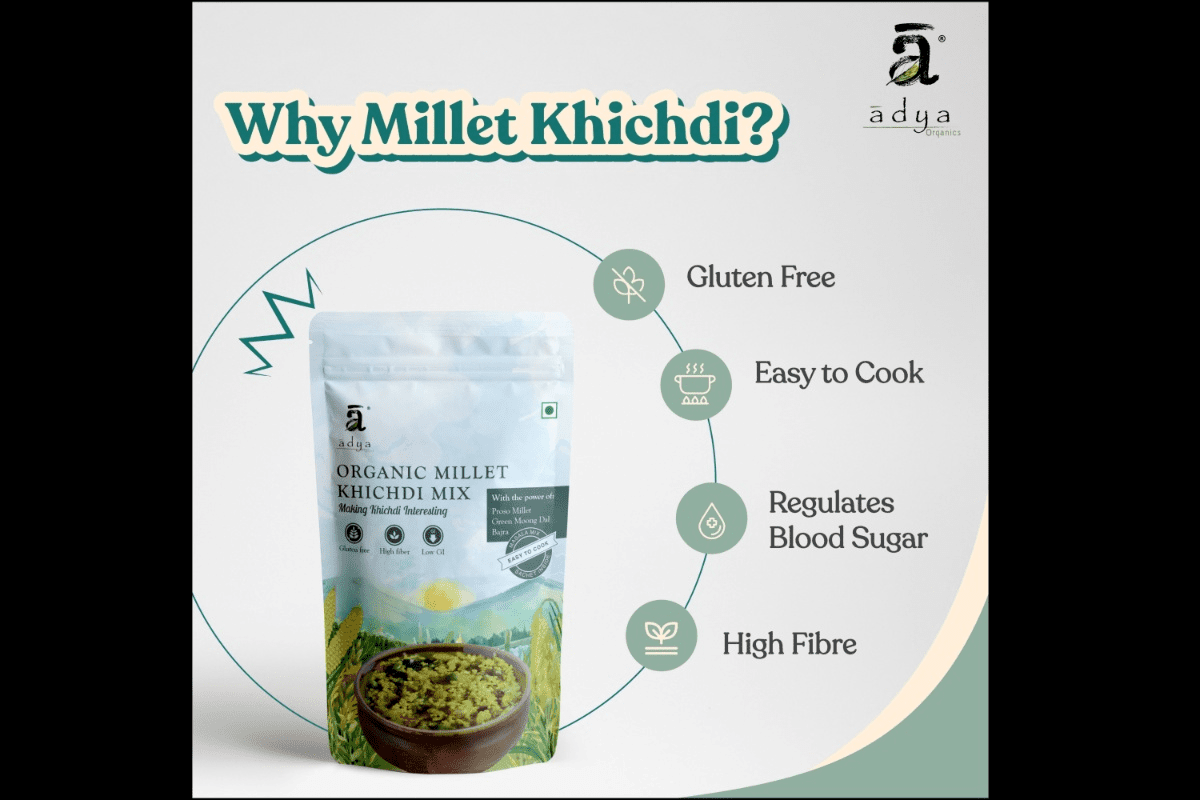How Millet Khichdi can be a great addition to a weight loss diet due to its low glycemic index and high satiety factor & diabetic-friendly meal option.

Millet khichdi can indeed be a great addition to a weight loss diet, particularly for individuals looking for diabetic-friendly meal options. Here’s why:
- Low Glycemic Index (GI): Millets, including foxtail millet, barnyard millet, and pearl millet, have a low glycemic index. This means they cause a gradual and steady rise in blood sugar levels compared to high-GI foods like white rice and refined grains. Low-GI foods help in managing blood sugar levels and reducing the risk of sudden spikes and crashes in energy levels, which is essential for diabetics.
- High in Fiber: Millets are rich in dietary fiber, which is beneficial for weight loss. Fiber helps in promoting a feeling of fullness and satiety, reducing the overall calorie intake. Additionally, it slows down the digestion and absorption of carbohydrates, helping to control blood sugar levels.
- Nutrient-Dense: Millets are packed with essential nutrients like vitamins, minerals, and antioxidants. They provide a variety of nutrients without the excess calories, making them an excellent choice for those looking to shed pounds while maintaining nutritional balance.
- Protein Content: Millets are a good source of plant-based protein, which is essential for muscle maintenance and repair. Protein also contributes to satiety, helping to control appetite and reduce overall calorie consumption.
- Healthy Fats: Millets contain healthy fats, including omega-3 fatty acids. These fats support overall health and can aid in weight loss by increasing satiety.
- Versatile Ingredients: Khichdi is a versatile dish that can be made with various millets and combined with vegetables and spices to enhance flavor and nutritional content. Including a variety of colorful vegetables adds essential vitamins and minerals.
To make a diabetic-friendly millet khichdi:
- Choose the Right Millet: Pick a millet of your choice, such as foxtail millet or pearl millet, and use it as the base for your khichdi.
- Add Vegetables: Incorporate plenty of non-starchy vegetables like spinach, carrots, bell peppers, and broccoli. These vegetables are low in calories and rich in fiber and nutrients.
- Use Lean Protein: Consider adding lean protein sources like tofu or skinless chicken breast to increase the protein content.
- Control Portions: Pay attention to portion sizes to avoid overeating. Millet khichdi is filling, so smaller servings can satisfy your hunger.
- Spice it up: Use spices like turmeric, cumin, coriander, and ginger, which not only add flavor but also have potential health benefits, including blood sugar control.
- Limit Added Fats: Be mindful of added fats like oil or ghee. Use them sparingly to keep the calorie count in check.
- Monitor Blood Sugar: If you’re diabetic, it’s essential to monitor your blood sugar levels regularly and adjust your diet accordingly. Consult with a healthcare professional or dietitian for personalized guidance.
Incorporating millet khichdi into your diet can be a nutritious and satisfying way to support weight loss and manage diabetes. However, it’s essential to maintain a balanced diet and a healthy lifestyle overall for the best results. Always consult with a healthcare professional or registered dietitian before making significant dietary changes, especially if you have diabetes or other health conditions.
